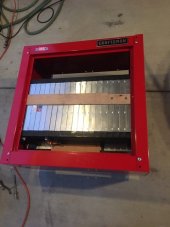GXMnow
Solar Wizard
- Joined
- Jul 17, 2020
- Messages
- 2,710
When I did my power failure test, it had no problem doing bulk charge from the 5 working Enphase inverters. I was hoping all 16 would stay working, but 11 of the inverters glitched out on a grid frequency error. That being said... Running off grid for 30 minutes, it was pushing almost all of my AC coupled solar power directly into the batteries, but since I was only getting 600 watts from solar, it was way below my normal charge rate. I transitioned back to grid, and my charge current went back to 30 amps and went into absorb after just 15 minutes as the batteries were actually full at my set 57.6 volt limit.
What firmware version are you running? I had to upgrade my XW-Pro to 1.03 for it to work right and it added some features too. They also have a 1.04 now, but it looks like that just added the Hawaii grid codes. My Gateway is at v1.08
What firmware version are you running? I had to upgrade my XW-Pro to 1.03 for it to work right and it added some features too. They also have a 1.04 now, but it looks like that just added the Hawaii grid codes. My Gateway is at v1.08




